To keep my miniature horse, Odin, in top form and prevent him from resembling a round ball of fur, daily exercise is a must.
Since choices are limited for a non-ridden horse, I have to move with him, for instance taking them on walks in the forest.
For me exercising my horses, to keep them in shape, is hard. The hardest part for me is to start! Once I’m out the house, it’s fine…. But getting started, is the hard part.
Finding the Threshold
Therefor I wanted to know what my biggest struggle actually is. It’s not that I’m not enjoying my horses… It’s not that I hate hand walking them or training them at liberty. On thee contrary! I always enjoy those activities very much!

Then, what is it?
What’s holding me back so often, from exercising Odin on a regular bases, I asked myself…
The biggest threshold is to start! Having read Atomic Habits (James Clear) really helped me to overcome the “starting” struggle of exercising Odin.
But… there was more!
My 2nd Biggest Struggle
The second biggest struggle is not knowing what to do: lack of a plan. Before making a proper training plan, I often did…. Nothing!
Yes, I went to Odin, but without a plan I often stayed in my head, having endless inner conversations about what I should do. Here are some examples:
- “When I want to long rein, I actually should have proper tack. Since I don’t have that, I can’t do long reins with Odin.”
- “Now I have the proper tack, I need to train him to understand rein aids, but today I want him to exercise. Reins aids will take more than one session, and movement is my priority. So long reins is out of the question.”
- “I would like to exercise Odin at liberty, but Fionn will interfere, so I can’t do that”
- “When I take Odin out, Fionn freaks out and will be upset and might hurt himself. I better take both of them. But since they will need some more training to each stay on their own side, they will probably fight over the clicks and treats”
I hope you recognize it and that I am not really crazy!
These inner conversations (with the goal of making no mistakes and trying to be prepared of everything) are exhausting. And repetitive! This is kind of how I put up more thresholds and took less action. This was until…
Turning Daily Exercise into a FUN Challenge for my Horse
I figured out the threshold to start, which was: not having a plan. The answer was to set up a Challenge. I love challenges! I made a commitment to accomplish a small daily challenge. Just to get me starting…
My 10 – 10 Challenge
I decided to make the threshold to start very, very low: only 10 minutes of hand walking for 10 days in a row. Just like what James Clear recommends in his book: Start small.
Ten minutes of hand walking Odin wouldn’t be too much stress for Fionn, who would need to stay behind in the paddock… I would walk Odin on the road for 5 minutes uphill and then turn around and come back so I would have my 10 minutes of walking. In my head I made it even smaller and called it my 5-minute walk. 😉
Simple, but Not Easy
Sounded easy, but it wasn’t. It was a simple plan, not easy! You should have heard the conversations going on in my head… The easiest way to shut up those voice was: “I am going to do it, no matter what! It’s only ten times! “This helped to shut down my eternal inner “why NOT to do it”-conversations. Which was really amazing!
The second rule I made (also learned from the experts in creating new habits) is never skip 2 days in a row! Life happens, and there can always be a really, really good reason not to go, but skipping a day can only happen once…
My 10-day, 10-Minutes Challenge
It gave me a clear plan:
- 10 minutes of hand walking Odin
- 10 consecutive days
- I was allowed to skip one day (but didn’t) and never 2 days in a row
- Knowing it would be only for 10 days, and having an end date made me actually do it!
- Having a plan for 10 days, helped me not to break the streak and kept going. Even on days it was hard to do it
- The sooner in the day I walked Odin, the sooner I could cross it off my list of Things To Do (which gave me a really amazing feeling of Accomplishments). Mornings rule!
Here is where the Magic started to happen
It was hard to start, but with a clear plan it became easier every day! I didn’t have to make any decisions: I already knew what to do (10 minutes of walk), how to do it (take him on the road on a lead) and when (as early as possible in the day).
Fionn got really quickly adjusted to the new situation of being left behind (I did prepare him before the Challenge, to help him manage his separation anxiety).
Predictability is Key
On day 3 or 4 Fionn was already expecting some hay and treats scattered around to keep him busy while I was walking Odin. Fionn became used to this ritual very quickly and really exceeded my expectations! He stayed calm being left behind and actually started to eat the hay. Once the daily walks with Odin was something he (and Odin) could predict, it really helped him coop. Every day Odin would leave for 10 minutes and then came back!
Odin got used to this ritual as well. There was no more fighting over me -the resource- and everyone knew the drill. Hay and treats for Fionn and Odin would get haltered for his daily outside trip.
Helping Fionn manage his separation anxiety was not something I would have expected to happen when I started! Bonus!
Day 7; More Magic
It was still a challenge to take Odin out every day, but having a low threshold of 10 minutes was really my Key to Success!
I also didn’t want to stop the streak, and that made it way easier to actually do it. Having an end day, was really helpful too: only 3 more days and then I can stop for a few days before starting again.
On day 7 my husband asked me if I wanted to go for a hike in the forest. Our property is adjacent to crown land and we have miles and miles of trails in our back yard. So I took Odin with me, since he had not yet had his daily walk.
My Bucket List Item happened!
On our walk Odin was so good! I decided to take him off the lead rope and see what happend….
He was really, really good! He responded so well to his name and my voice. Turned out he has a really strong recall! It was SO MUCH FUN to have him off leash! He could trot and canter whenever. snack on grass (with my HippoLogic Grass Training it was easy to ask him to stop eating and start walking again).
We hiked for about over an hour and Odin stayed with us -at liberty!- all the time. Yes, he trotted off for a bit, but when called he, stopped and came back.
This was on my bucket list for such a long time: walking my horse at liberty in nature! Now it happend!! It was FANTSTIC!
Without starting my 10-day 10-minute Movement Challenge it wouldn’t have happened!
I didn’t expect this: to cross off one of my long-term bucket list by simply starting to hand walk my horse 10 minutes a day! I know for sure, that without my 10-days, 10-minute challenge this wouldn’t have happened!
Fionn got really used to being left alone for longer periods of time (so another Win!) and hand walking Odin became the highlight of my day instead of a thing to dread!
Next blog I will write more about Grass Training and how it helps to have a Grass Trained Horse on trails!
Want to join me in my next Challenge?
I will do more Movement Challenges this Summer. Care to join me? I will take HippoLogic Academy members on this journey. There are only a limited amount of spaces, because my capacity to offer 1:1 coaching in our group is limited by my time and energy.
If you love to be a part of an active membership in which you learn to train horses with positive reinforcement, apply to become a member!
Want to do more with Clicker Training?
Join the HippoLogic Academy! I coach and support you personally getting your dream results with positive reinforcement, so that you can bond with your horse in the process. Create a connection build on mutual trust and understanding, a clear two-way communication built on love. Click the image to go access the application form ↓

Not sure? Start with a free clicker training assessment to get taste of what it feels like to work with me. When you have a specific struggle that you want to overcome, don’t hesitate to contact me.
In this assessment you’ll discover what’s holding you back from accomplishing the things you want with your horse. After our conversation you’ll know exactly what to do, in order to move forward towards your goals.
























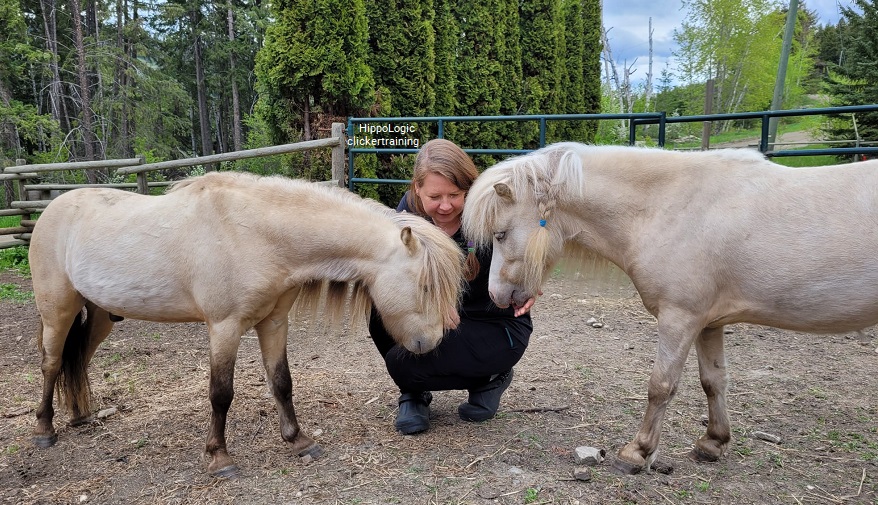
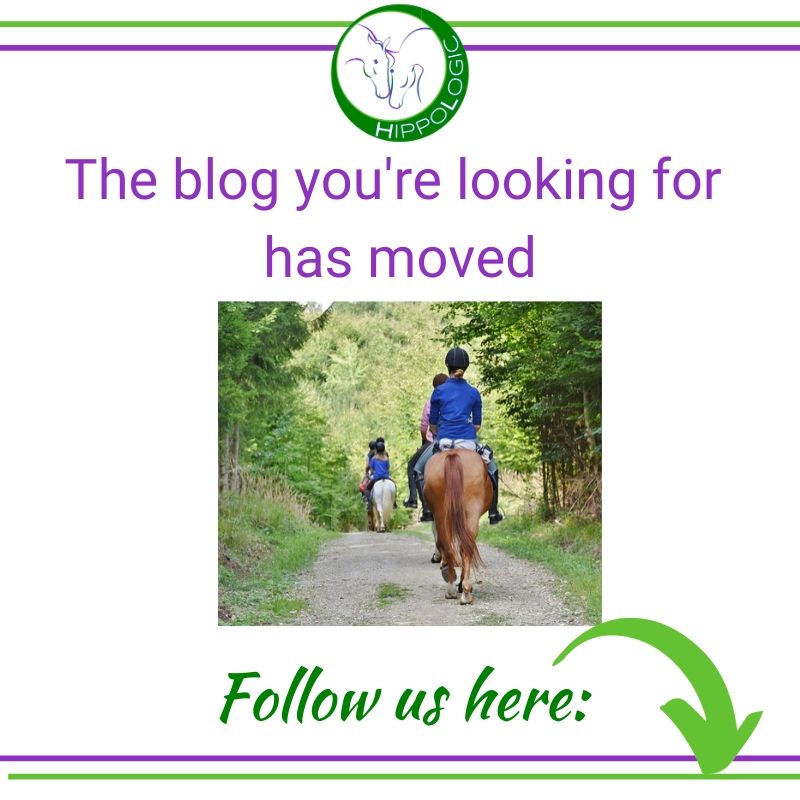







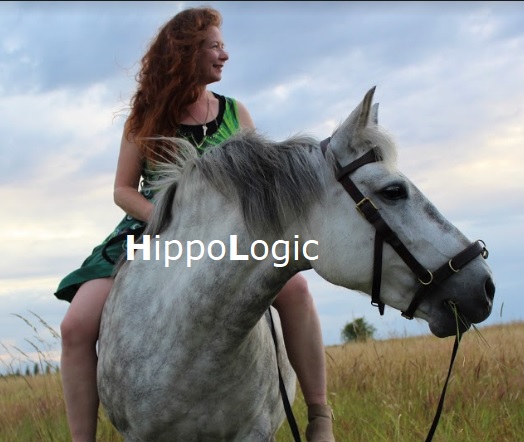
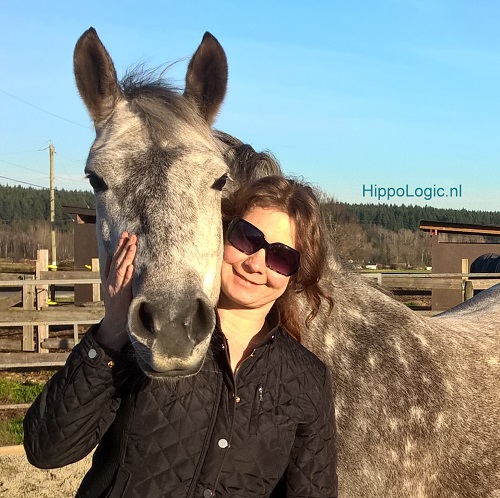

 First you need to know that it’s the receiver (horse) that determines the reinforcer, not the trainer!
First you need to know that it’s the receiver (horse) that determines the reinforcer, not the trainer! High value reinforcers can help your horse to increase his own criteria of a certain behaviour because the value of the treat excites him.
High value reinforcers can help your horse to increase his own criteria of a certain behaviour because the value of the treat excites him. High value reinforcers can be well used when your horse is nervous, in pain or if something else (a distraction) is also highly reinforcing.
High value reinforcers can be well used when your horse is nervous, in pain or if something else (a distraction) is also highly reinforcing. Example 1: when your horse is standing on a mat and it is difficult to built duration, are you really reinforcing ‘standing on the mat’? Describe your criteria and focus on what you want. Standing on a mat: hoof or hooves are touching the mat, horse has weight on his foot/feet.
Example 1: when your horse is standing on a mat and it is difficult to built duration, are you really reinforcing ‘standing on the mat’? Describe your criteria and focus on what you want. Standing on a mat: hoof or hooves are touching the mat, horse has weight on his foot/feet. You horse learns that as long as you are still counting he must do whatever he is doing. If he moves before you can count to 2, you start counting from 1 again.
You horse learns that as long as you are still counting he must do whatever he is doing. If he moves before you can count to 2, you start counting from 1 again.





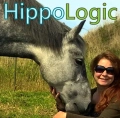


 If a horse mugs or bites backing helps create space immediately between you and the horse. Then you can make a plan how to address the undesired behaviour. Backing also can be helpful in behaviours like teaching your horse to align with the mounting block or ask him to lift his hoof if he is standing on your lead rope.
If a horse mugs or bites backing helps create space immediately between you and the horse. Then you can make a plan how to address the undesired behaviour. Backing also can be helpful in behaviours like teaching your horse to align with the mounting block or ask him to lift his hoof if he is standing on your lead rope. This exercise starts out to teach people to train their horse not to mug them and to be ‘polite’ around food. With ‘polite’ I mean the food always goes to the horse, never the other way around. Treats need to be carefully taken off of the hand with their lips, not the teeth. Only the treat is eaten, not the fingers and so on. Basically you just teach your horse not to forage for food. You train them to suppress their natural exploration behaviour.
This exercise starts out to teach people to train their horse not to mug them and to be ‘polite’ around food. With ‘polite’ I mean the food always goes to the horse, never the other way around. Treats need to be carefully taken off of the hand with their lips, not the teeth. Only the treat is eaten, not the fingers and so on. Basically you just teach your horse not to forage for food. You train them to suppress their natural exploration behaviour.




 Horses are curious by nature and when you let him run away, he will feel safe and find the right distance that feels safe for him to inspect the object. Then he wants to come closer and see what it is. If you can encourage your horse with positive reinforcement to examine the new thing, his curiosity is triply rewarded. First of all because he satisfies his own need to know that it is safe, second because you reinforced him to be curious and third by giving him the freedom to run away to lower his stress. Instead of pushing him to move towards something scary while he is not yet ready to do so.
Horses are curious by nature and when you let him run away, he will feel safe and find the right distance that feels safe for him to inspect the object. Then he wants to come closer and see what it is. If you can encourage your horse with positive reinforcement to examine the new thing, his curiosity is triply rewarded. First of all because he satisfies his own need to know that it is safe, second because you reinforced him to be curious and third by giving him the freedom to run away to lower his stress. Instead of pushing him to move towards something scary while he is not yet ready to do so.
 I didn’t understand that I made it impossible for myself to be satisfied, proud and happy about my achievements when I was only criticizing myself… I didn’t understand that what I was focusing on (my faults, mistakes and failures) grew. I couldn’t see that I was pushing myself forward on a downward spiral which was not at all uplifting or supporting.
I didn’t understand that I made it impossible for myself to be satisfied, proud and happy about my achievements when I was only criticizing myself… I didn’t understand that what I was focusing on (my faults, mistakes and failures) grew. I couldn’t see that I was pushing myself forward on a downward spiral which was not at all uplifting or supporting.
You must be logged in to post a comment.